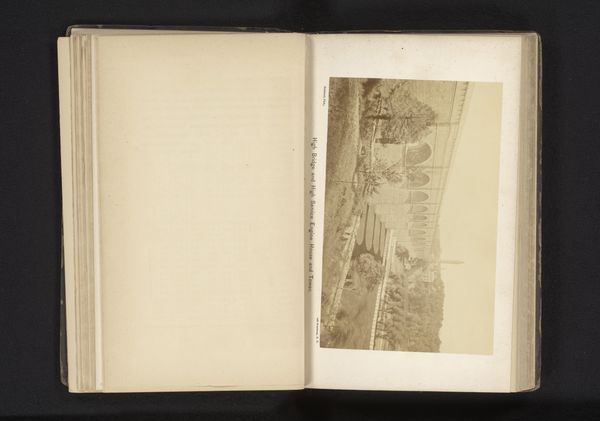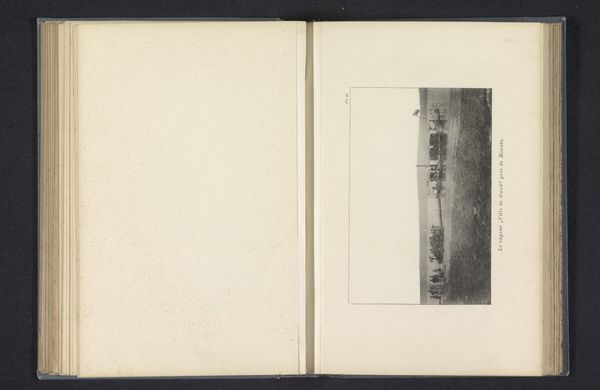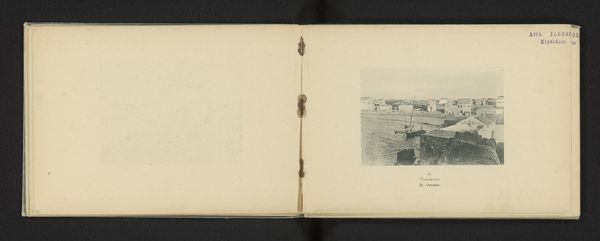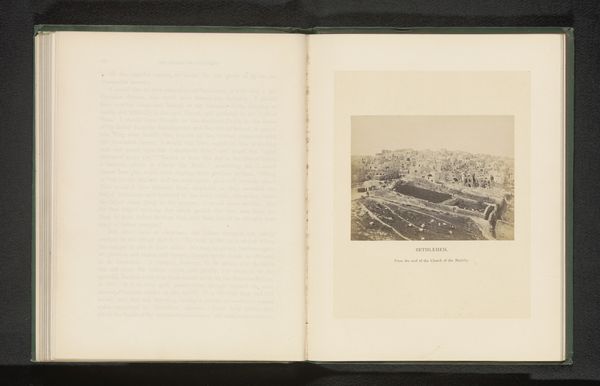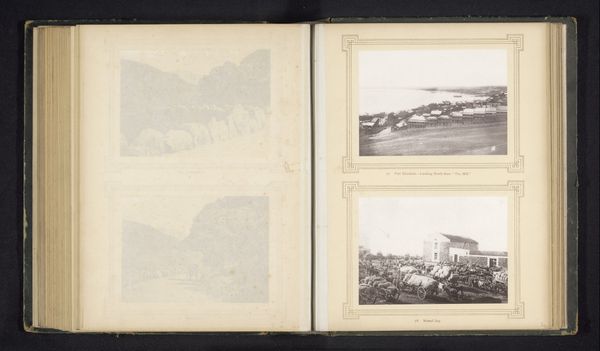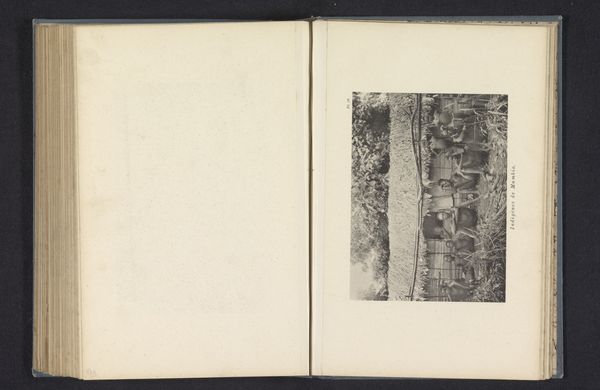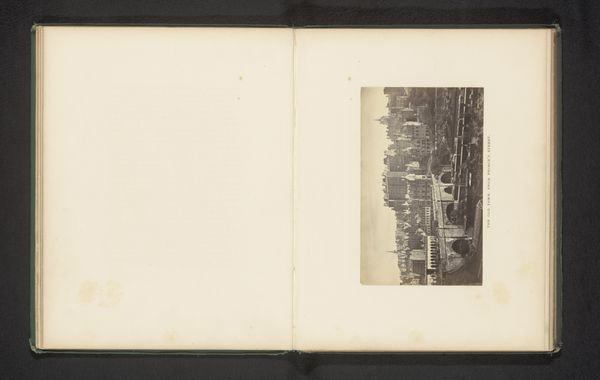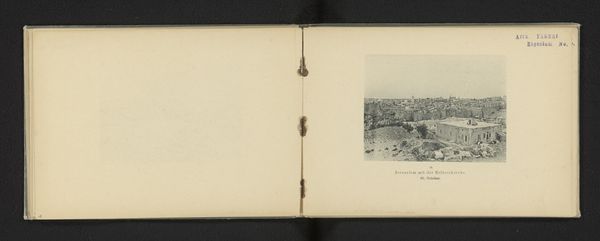
Kinderen die wees werden na een ontploffing van een munitiefabriek in Oosterweel bij Antwerpen in 1889 1889
0:00
0:00
print, photography, gelatin-silver-print
# print
#
landscape
#
photography
#
gelatin-silver-print
#
realism
Dimensions: height 165 mm, width 230 mm
Copyright: Rijks Museum: Open Domain
Editor: This photograph, a gelatin-silver print from 1889 by L. van Neck, is titled "Children orphaned after a munitions factory explosion in Oosterweel near Antwerp." The damaged structure and children present a poignant, bleak atmosphere. What compositional elements stand out to you? Curator: Immediately, the stark contrast between the ruined building and the children draws the eye. The photograph's composition— the darks of the building juxtaposed against the lighter tones of the children's clothing—creates a strong visual tension. Note how the artist frames the figures within the damaged architectural space, and the contrast between their placement. How does the interplay of light and shadow affect your perception? Editor: I see it. The darkness emphasizes the children’s vulnerability, as they are seemingly surrounded by wreckage. Curator: Precisely. Further, the use of the landscape surrounding the building contributes to the photograph's emotional weight, forming a composition of shapes that mirror, reflect, and respond to the human figures contained within. It also prompts questions of surface: what textural information does the image's surface communicate to you? Editor: The graininess gives it a rough, almost documentary feel. It reinforces the image’s realism. This isn't a constructed image, but a depiction of hardship. Curator: The very materiality enhances its authenticity, imbuing the tragic event with a tactile, visual weight. This materiality allows for the transmission of light. How do you now consider that with your prior understanding? Editor: I hadn't considered the function of that light, but I see how the medium contributes meaning and impact. Thanks, that was a new perspective. Curator: A pleasure. Examining an image’s internal mechanisms illuminates its resonance and potential.
Comments
No comments
Be the first to comment and join the conversation on the ultimate creative platform.
